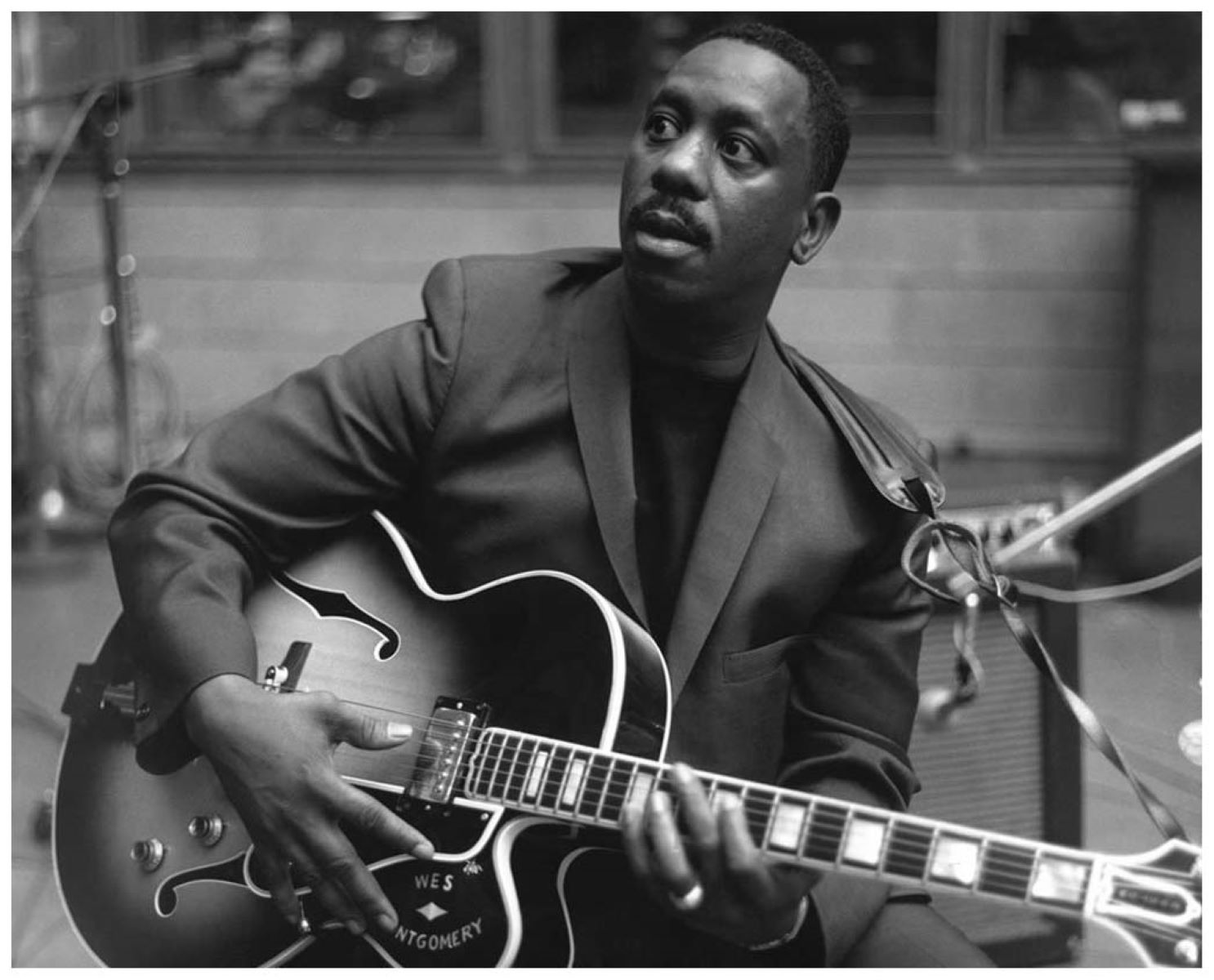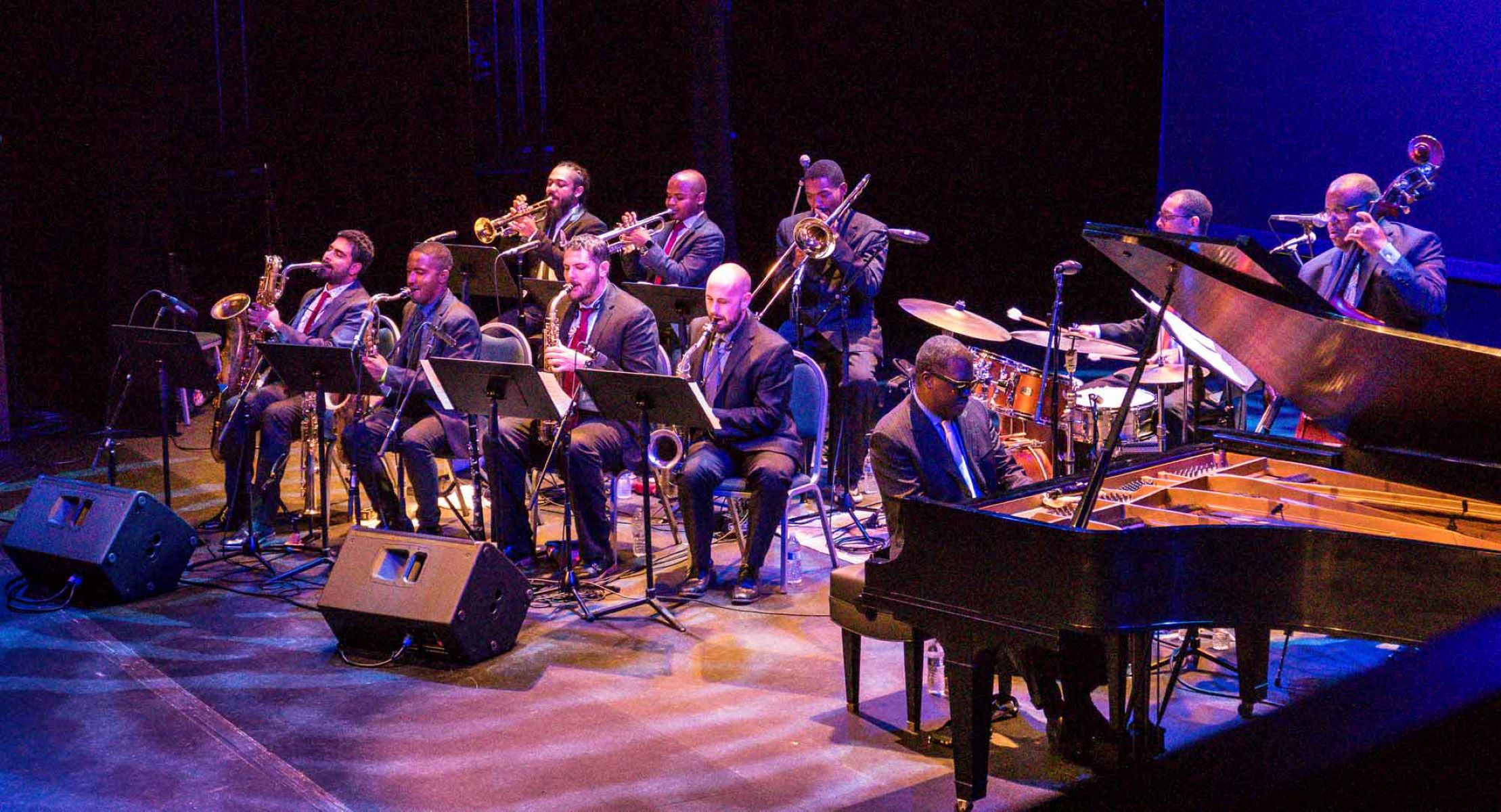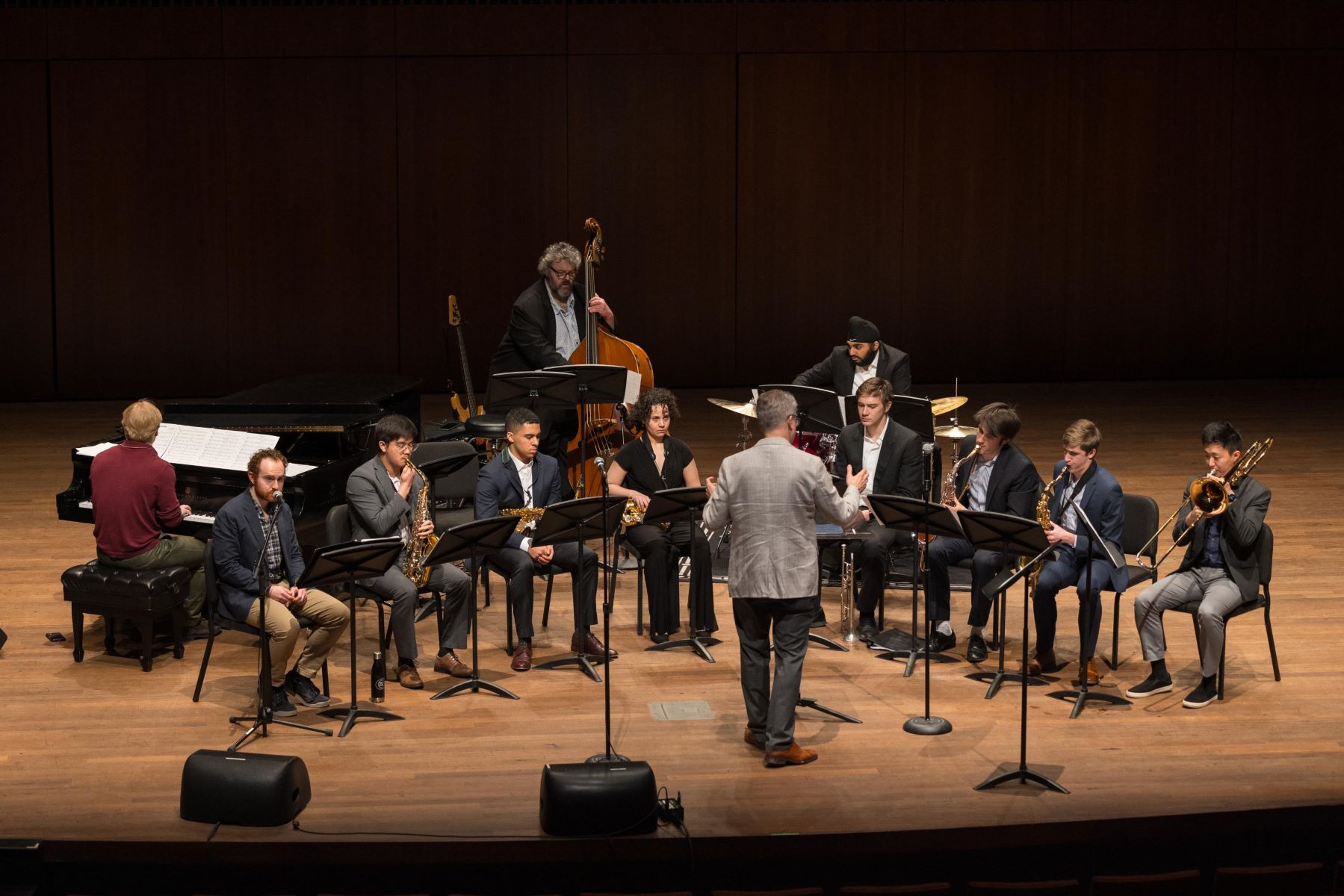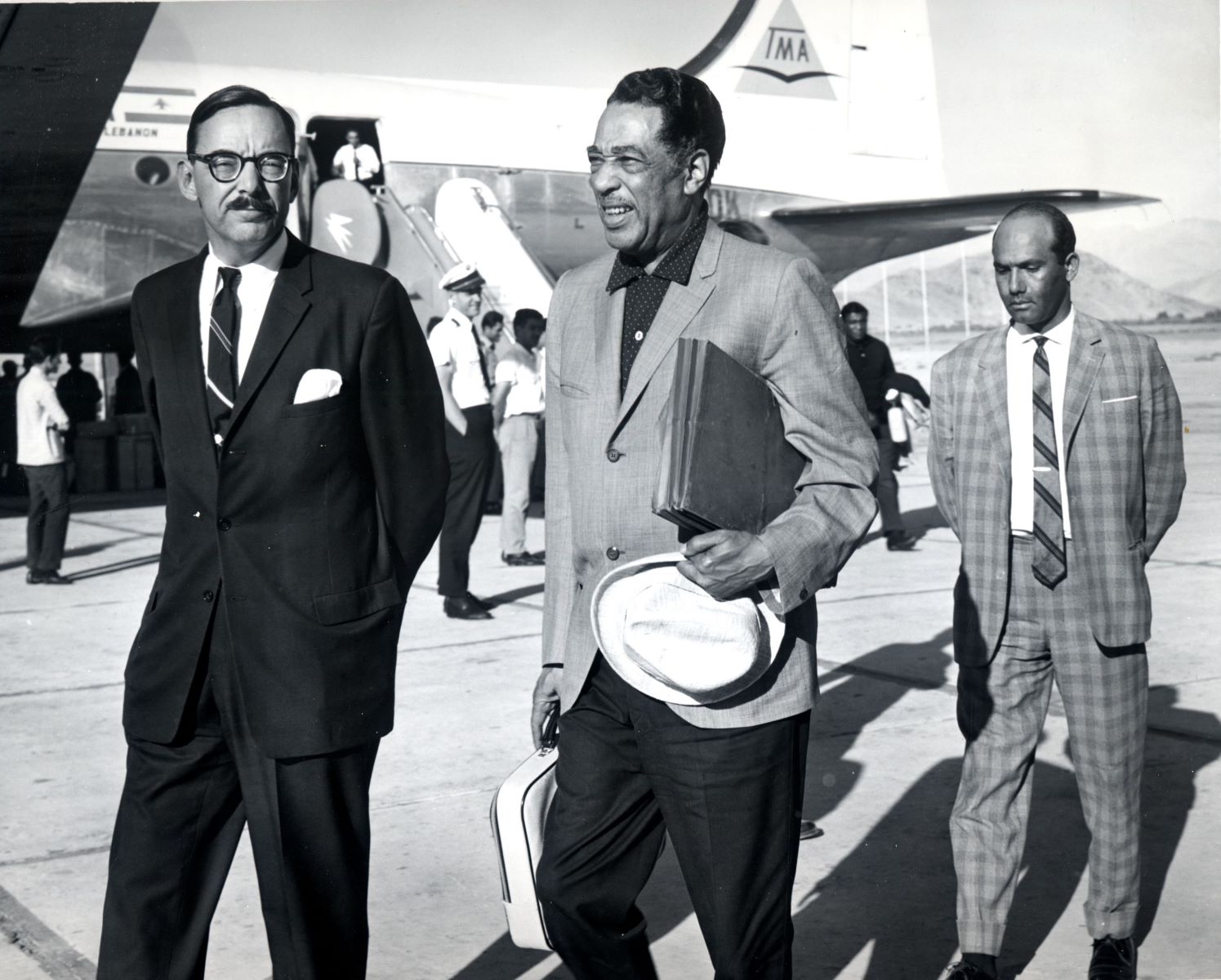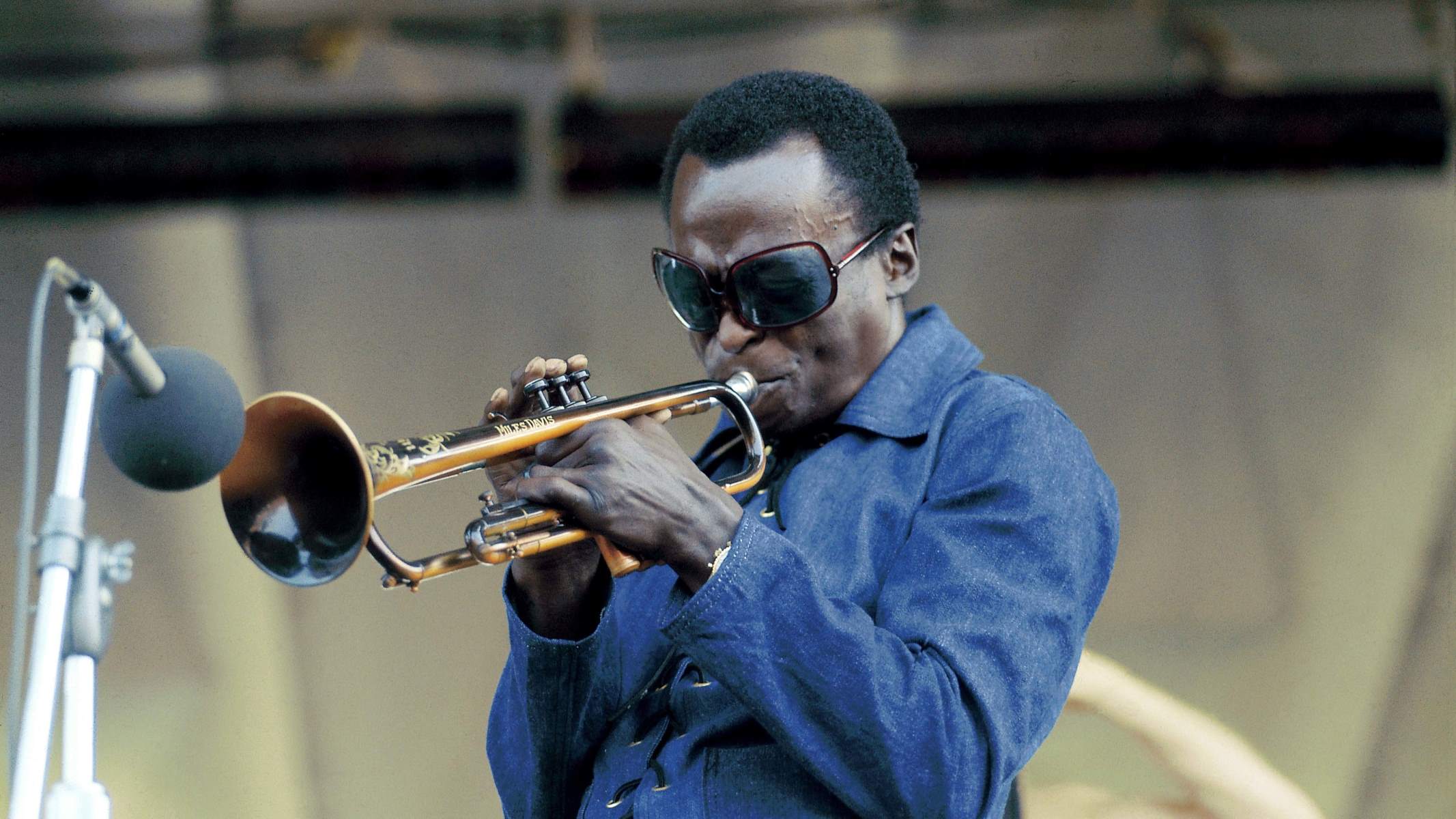

Jazz
What Style Of Jazz Did Miles Davis Play
Modified: February 24, 2024
Discover the iconic jazz style of Miles Davis, a legendary musician who revolutionized the genre. Explore his unique contributions to the world of jazz and experience the brilliance of his timeless music.
(Many of the links in this article redirect to a specific reviewed product. Your purchase of these products through affiliate links helps to generate commission for AudioLover.com, at no extra cost. Learn more)
Table of Contents
Introduction
Jazz is a genre of music known for its improvisation, complex harmonies, and rhythmic diversity. It emerged in the early 20th century in African American communities in the United States and has since become a significant cultural expression worldwide. One of the most influential figures in the history of jazz is Miles Davis, a legendary trumpeter, composer, and bandleader.
Miles Davis was born on May 26, 1926, in Alton, Illinois. He began playing the trumpet at a young age and quickly developed a prodigious talent. Over his career, Davis explored various styles and pushed the boundaries of jazz, consistently reinventing himself and the genre as a whole.
Throughout his journey, Miles Davis played a pivotal role in the evolution of jazz, leaving a profound impact on future generations of musicians. From his early influences to his groundbreaking experiments with fusion, his contributions to jazz are immeasurable.
This article delves into the various styles of jazz that Miles Davis played throughout his illustrious career. From his early beginnings to his later explorations, we will explore the different eras and influences that shaped his groundbreaking approach to music.
Early Influences
Miles Davis’s musical journey was shaped by a wide range of influences spanning various genres. As a young artist, he drew inspiration from both classical music and the vibrant jazz scene of the time.
In his formative years, Davis studied trumpet under Elwood Buchanan, a local bandleader. He also immersed himself in the recordings of influential performers such as Louis Armstrong and Roy Eldridge, learning from their distinctive styles and techniques.
Another significant influence on Davis was the pianist and composer, Duke Ellington. Davis was captivated by Ellington’s innovative approach to arranging and his ability to blend different musical styles seamlessly. Ellington’s use of color, texture, and dynamics greatly influenced Davis’s concept of composition and performance.
Addiction a strong keyword. Davis also looked to non-musical sources for inspiration, particularly the works of visual artists. This led to his fascination with modern jazz, which prioritized experimentation and improvisation. The influence of modern art can be seen in Davis’s willingness to push the boundaries of traditional jazz and his constant search for new sounds and textures.
In addition to the artists mentioned above, Davis was heavily influenced by the bebop movement, which emerged in the 1940s. Bebop, with its complex harmonies and fast, virtuosic improvisation, resonated deeply with Davis. He studied the recordings of bebop pioneers like Dizzy Gillespie and Charlie Parker, absorbing their innovative approach to jazz and incorporating it into his own playing.
These early influences laid the foundation for Davis’s unique musical style. His ability to combine elements from different genres and his constant search for new sounds was a hallmark of his career. These influences would shape his artistic vision and drive him to push the boundaries of jazz throughout his life.
Bebop and Hard Bop Eras
In the 1940s, Miles Davis emerged as a prominent figure in the bebop movement, a genre characterized by its fast tempos, complex harmonies, and intricate improvisation. Davis’s skillful trumpet playing and lyrical approach to improvisation made him a sought-after musician in the New York jazz scene.
During this period, Davis collaborated with legendary musicians such as Charlie Parker, Dizzy Gillespie, and Thelonious Monk. These collaborations allowed Davis to further refine his improvisational skills and develop his unique musical voice.
Davis’s recordings from the bebop era, such as “Birth of the Cool” and “Miles Davis and His Orchestra,” showcased his virtuosity and demonstrated his ability to innovate within the jazz tradition. These recordings laid the groundwork for the emerging subgenre known as cool jazz, characterized by its more relaxed, laid-back sound.
As the 1950s rolled in, Davis shifted his focus towards the hard bop movement, a response to the cool jazz trend and a return to a more aggressive, bluesy approach. In albums like “Milestones” and “Cookin’ with the Miles Davis Quintet,” Davis explored new rhythmic and harmonic possibilities while maintaining a strong connection to the African American musical roots.
During the hard bop era, Davis assembled a remarkable quintet consisting of John Coltrane on tenor saxophone, Red Garland on piano, Paul Chambers on bass, and Philly Joe Jones on drums. This group, known as the “First Great Quintet,” created groundbreaking music that fused elements of bop and blues, setting the stage for future jazz innovations.
The bebop and hard bop eras were pivotal for Davis’s artistic development, helping him refine his improvisational skills and establish himself as a leading figure in the jazz world. These periods laid the groundwork for his later musical explorations and showcased his ability to navigate different styles while leaving an indelible mark on the history of jazz.
Birth of Modal Jazz
In the late 1950s, Miles Davis embarked on a new musical direction that would revolutionize jazz once again. This period marked the birth of modal jazz, a style characterized by its emphasis on extended modal improvisation and a departure from the complex chord progressions of bebop and hard bop.
The catalyst for this shift was Davis’s landmark album, “Kind of Blue,” released in 1959. The album featured a group of exceptional musicians, including John Coltrane, Cannonball Adderley, Bill Evans, Paul Chambers, and Jimmy Cobb. “Kind of Blue” utilized a modal approach, wherein improvisation was based on simple scales or modes rather than intricate chord changes.
This departure from traditional chord progressions allowed for a more open and spacious sound, giving the musicians greater freedom to explore melodies and create rich harmonic textures. The result was a groundbreaking album that became one of the best-selling and most critically acclaimed jazz recordings of all time.
Miles Davis’s “Kind of Blue” not only influenced the direction of jazz but also had a profound impact on other genres of music. Its modal approach found resonance in the realms of rock, fusion, and even classical music, influencing artists from John Coltrane to Jimi Hendrix and inspiring countless musicians across different genres.
Following the success of “Kind of Blue,” Davis continued to explore modal jazz in albums such as “Miles Davis at Carnegie Hall” and “Sketches of Spain.” In these recordings, he further pushed the boundaries of modal improvisation and incorporated elements of Spanish and flamenco music, creating a unique fusion of styles.
The birth of modal jazz represented a significant shift in Miles Davis’s artistic vision and showcased his ability to adapt and evolve as a musician. His exploration of modal improvisation forever altered the landscape of jazz, opening up new possibilities for future generations of artists.
Fusion and Electric Period
In the late 1960s and 1970s, Miles Davis embarked on a radical musical exploration, delving into the realm of fusion and embracing electric instruments. This period, often referred to as his “fusion” or “electric” period, marked another transformative phase in his career.
The catalyst for this change was Davis’s collaboration with keyboardist and composer Herbie Hancock, as well as other young musicians who were pushing the boundaries of jazz. Together, they ventured into uncharted territories, incorporating elements of rock, funk, and electronic music into their compositions.
One of the most significant albums from this period is “Bitches Brew” (1970), considered a landmark recording in the fusion genre. It featured a large ensemble of talented musicians, including Joe Zawinul, Wayne Shorter, John McLaughlin, and Chick Corea, among others.
“Bitches Brew” showcased a new sound characterized by dense, layered textures, extended improvisations, and the prominent use of electric instruments, particularly Davis’s trumpet through the use of electronic effects. The album received both critical acclaim and commercial success, solidifying Davis as a pioneer in the fusion movement.
Following the success of “Bitches Brew,” Davis continued to explore the fusion sound in albums like “Live-Evil” (1971), “On the Corner” (1972), and “Get Up with It” (1974). These albums incorporated elements of funk, rock, and avant-garde music, defying genre boundaries and pushing the limits of jazz experimentation.
The fusion and electric period represented a fearless exploration of new sounds and a departure from the traditional jazz conventions. Davis’s use of electric instruments, synthesizers, and experimental production techniques challenged the notion of what jazz could be, inspiring a new wave of musicians and shaping the future of jazz fusion.
While the fusion and electric period caused controversy among some traditional jazz fans, it solidified Davis’s status as an innovator and ensured his influence would extend beyond the boundaries of jazz. His willingness to take risks and push the boundaries of the genre left an indelible mark on the musical landscape.
Later Career and Legacy
As Miles Davis entered the later years of his career, he continued to evolve as an artist while leaving an enduring legacy in jazz. Despite health issues and periods of relative seclusion, his creative output remained significant, and he continued to experiment with different sounds and collaborations.
In the 1980s, Davis embraced a more contemporary sound and collaborated with younger musicians, incorporating elements of funk, soul, and hip-hop into his music. Albums such as “Tutu” (1986) and “Amandla” (1989) showcased his ability to adapt to the changing musical landscape while staying true to his artistic vision.
Throughout his career, Davis was known for his ability to assemble exceptional ensembles. His band members became renowned musicians in their own right, with figures such as John Coltrane, Herbie Hancock, Wayne Shorter, and Tony Williams making significant contributions to the jazz canon.
Not only did Miles Davis influence jazz through his innovative playing and compositions, but he also left a lasting impact on the art of improvisation. His ability to explore new harmonic territories, his use of space and silence, and his mastery of dynamics were groundbreaking and inspired generations of musicians to redefine their approach to improvisation.
Miles Davis’s impact extended beyond his musical contributions. He challenged racial boundaries in the jazz world, as one of the few Black leaders in a predominantly white industry. He fearlessly pushed forward, breaking down barriers and creating opportunities for future generations of Black musicians.
Davis’s influence can still be felt today in various musical genres. His fusion of different styles, his constant search for innovation, and his commitment to artistic authenticity continue to inspire and shape the landscape of contemporary music.
Miles Davis’s musical journey is a testament to the power of artistic exploration and reinvention. His ability to adapt and push boundaries while staying true to his identity made him an iconic figure in jazz and a true innovator in the realm of music as a whole. His legacy as a musician, composer, and visionary will continue to influence and inspire generations to come.
Conclusion
Miles Davis was a visionary and an innovator whose impact on jazz and music as a whole cannot be overstated. From his early influences to his revolutionary experiments with fusion and electric instruments, Davis fearlessly pushed the boundaries of jazz, constantly evolving and reinventing himself throughout his career.
His early forays into bebop and hard bop showcased his virtuosity and mastery of the trumpet, setting the stage for his later explorations. The birth of modal jazz with his landmark album “Kind of Blue” revolutionized the genre, inspiring future generations of musicians to embrace a more open and imaginative approach to improvisation.
With his fusion and electric period, Davis once again shattered the conventions of jazz, incorporating elements of rock, funk, and electronic music into his compositions. Albums like “Bitches Brew” pushed the boundaries of what jazz could be, leaving an indelible mark on the music world and inspiring countless artists across genres.
Throughout his career, Davis surrounded himself with exceptional musicians, fostering collaborations that resulted in groundbreaking recordings and influential compositions. His ability to assemble remarkable ensembles and empower his band members to showcase their talents further cemented his status as a true leader in the jazz world.
Miles Davis’s legacy extends beyond his music. His commitment to artistic authenticity and his willingness to confront racial boundaries within the industry were equally impactful. He defied expectations and opened doors for future generations, paving the way for greater diversity and inclusion in the jazz world.
Today, Davis’s influence can still be felt in the music of artists across various genres. His willingness to take risks, explore new sounds, and constantly reinvent himself serves as an inspiration for musicians seeking to push the boundaries of their own creative expression.
In conclusion, Miles Davis was a transformative figure in the history of jazz. Through his unwavering dedication to innovation, his mastery of the trumpet, and his ability to assemble extraordinary ensembles, Davis left an indelible mark on the genre and the wider music landscape. His legacy as a visionary, an iconoclast, and an undeniable musical genius will continue to inspire and resonate for generations to come.


